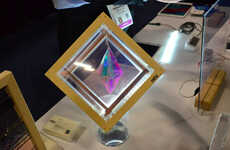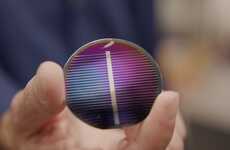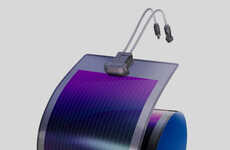
Stanford Scientists Designed a Solar Panel Cell Modeled After Bug Eyes
Alyson Wyers — September 19, 2017 — Eco
References: stanford.edu & springwise
Stanford University scientists were inspired by insect eyes in their development of a new design for a solar panel cell. The cells have a delicate photovoltaic material referred to as perovskite that is not damaged when it is exposed to heat, mechanical stress or moisture.
Researchers tested the material to see if it could withstand high temperatures on rooftops by exposing the perovskite cells to 185 degrees Fahrenheit and 85% relative humidity over a 6 week period. The solar panel cell was still capable of generating electricity at a highly efficient rate. Modeled after bug eyes, the compound solar cell is comprised of "a vast honeycomb of perovskite microcells, each encapsulated in a hexagon-shaped scaffold just 0.02 inches wide" according to SpringWise.
Researchers tested the material to see if it could withstand high temperatures on rooftops by exposing the perovskite cells to 185 degrees Fahrenheit and 85% relative humidity over a 6 week period. The solar panel cell was still capable of generating electricity at a highly efficient rate. Modeled after bug eyes, the compound solar cell is comprised of "a vast honeycomb of perovskite microcells, each encapsulated in a hexagon-shaped scaffold just 0.02 inches wide" according to SpringWise.
Trend Themes
1. Insect-inspired Solar Cells - Developing solar panel cells inspired by insect eyes presents opportunities for highly efficient and resilient photovoltaic materials.
2. Perovskite Material - Exploring the use of perovskite material in solar panels unlocks potential for more durable and versatile energy generation.
3. Microcell Technology - Harnessing microcell technology in solar panel design offers innovative solutions for increasing the efficiency and scalability of renewable energy systems.
Industry Implications
1. Renewable Energy - The renewable energy industry can leverage insect-inspired solar panel cells to improve the efficiency and durability of photovoltaic systems.
2. Solar Power - The solar power industry can benefit from incorporating perovskite material to enhance the resilience and performance of solar panel technology.
3. Materials Science - The materials science industry can explore the application of microcell technology to develop new materials and structures for various advanced technologies, including solar cells.
3.1
Score
Popularity
Activity
Freshness























